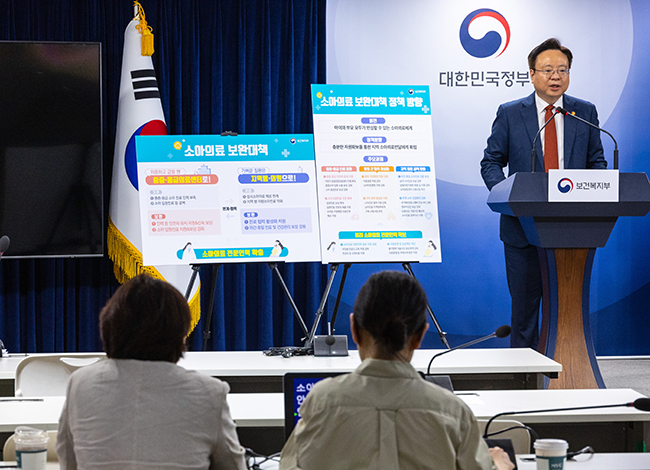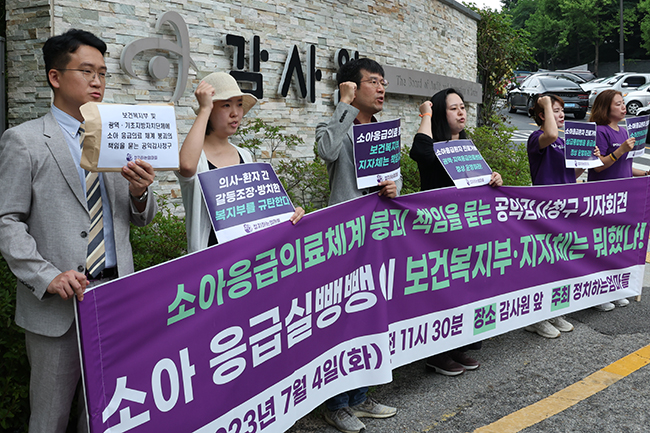
The government has taken steps to prevent a collapse in pediatric medical care, increasing nighttime pediatric consultation fees and providing an additional monthly allowance of 1 million won to pediatricians. (Image courtesy of Yonhap News)
SEOUL, Sept. 25 (Korea Bizwire) – In May of this year, a tragic incident occurred in Gwangjin-gu, Seoul, when a 5-year-old child with acute laryngitis was unable to access an available emergency room, and sadly passed away without receiving inpatient care. This incident shed light on the concerning state of pediatric healthcare in South Korea.
A survey conducted by the Korean Society of Pediatrics and Adolescent Medicine in December of last year revealed some alarming trends. It found that 51 percent of pediatric training hospitals, mostly university hospitals, had reduced their pediatric emergency departments.
Only 38 percent of these hospitals claimed to provide round-the-clock pediatric care. Since the end of last year, several major hospitals have either stopped admitting pediatric patients or have scaled back their nighttime and weekend services.
The root cause of this issue is a shortage of pediatricians. Over the last four years, the rate of recruitment of new pediatricians has sharply declined, from 71 percent in 2020 to 37 percent in 2021, 28 percent in 2022, and 25 percent in 2023.
In response, the government has taken steps to prevent a collapse in pediatric medical care, increasing nighttime pediatric consultation fees and providing an additional monthly allowance of 1 million won to pediatricians. Additionally, the government plans to expand public specialty care centers for children and pediatric emergency medical centers.
Recently, the Ministry of Health and Welfare announced the “Follow-up Plan for Improving the Pediatric Medical System,” which focuses on attracting doctors to pediatrics, a field in crisis due to declining birth rates.
Those in the medical community argue that the high cost of pediatric training and the legal burden in case of medical accidents are discouraging doctors from choosing pediatrics as their specialty. In the first half of this year, only 16.6 percent of pediatric residency applications were accepted.
To alleviate the legal burden, the government is considering a more realistic compensation plan for “unavoidable medical accidents” that are not intentional. A social council with legal experts to ease the legal burden on pediatric doctors will also be established.

Those in the medical community argue that the high cost of pediatric training and the legal burden in case of medical accidents are discouraging doctors from choosing pediatrics as their specialty. (Image courtesy of Yonhap News)
To address the issue of parents not being able to find open hospitals at night and on holidays, the government plans to double compensation for consultations at hospitals, clinics, and pharmacies for children under the age of 6 during late-night hours.
Additionally, Moonlight Pediatric Hospitals, which provide care until midnight on weekdays and 6 p.m. on weekends, will receive financial support. These specialized care centers will receive an average of 200 million won per hospital, with fees adjusted to the hours of operation, potentially doubling compared to the existing nighttime medical management fee.
To improve the treatment of critically ill and emergency cases in children, the budget for facilities and equipment at children’s public specialized treatment centers will increase from 1 billion won this year to 6.1 billion won next year.
Children’s Public Specialized Treatment Centers focus on the care of critically ill children and were introduced in 2016.
Earlier this year, the government introduced a pilot project to compensate for medical losses retroactively to support Children’s Public Specialized Medical Centers, which provide short-term hospitalization for critically ill children and home treatment pilot projects.
Furthermore, plans include the establishment of two more pediatric emergency medical centers.
However, it remains to be seen whether these policies will be enough to encourage the growth of pediatric specialists needed to address the gap in essential pediatric care.
M. H. Lee (mhlee@koreabizwire.com)






